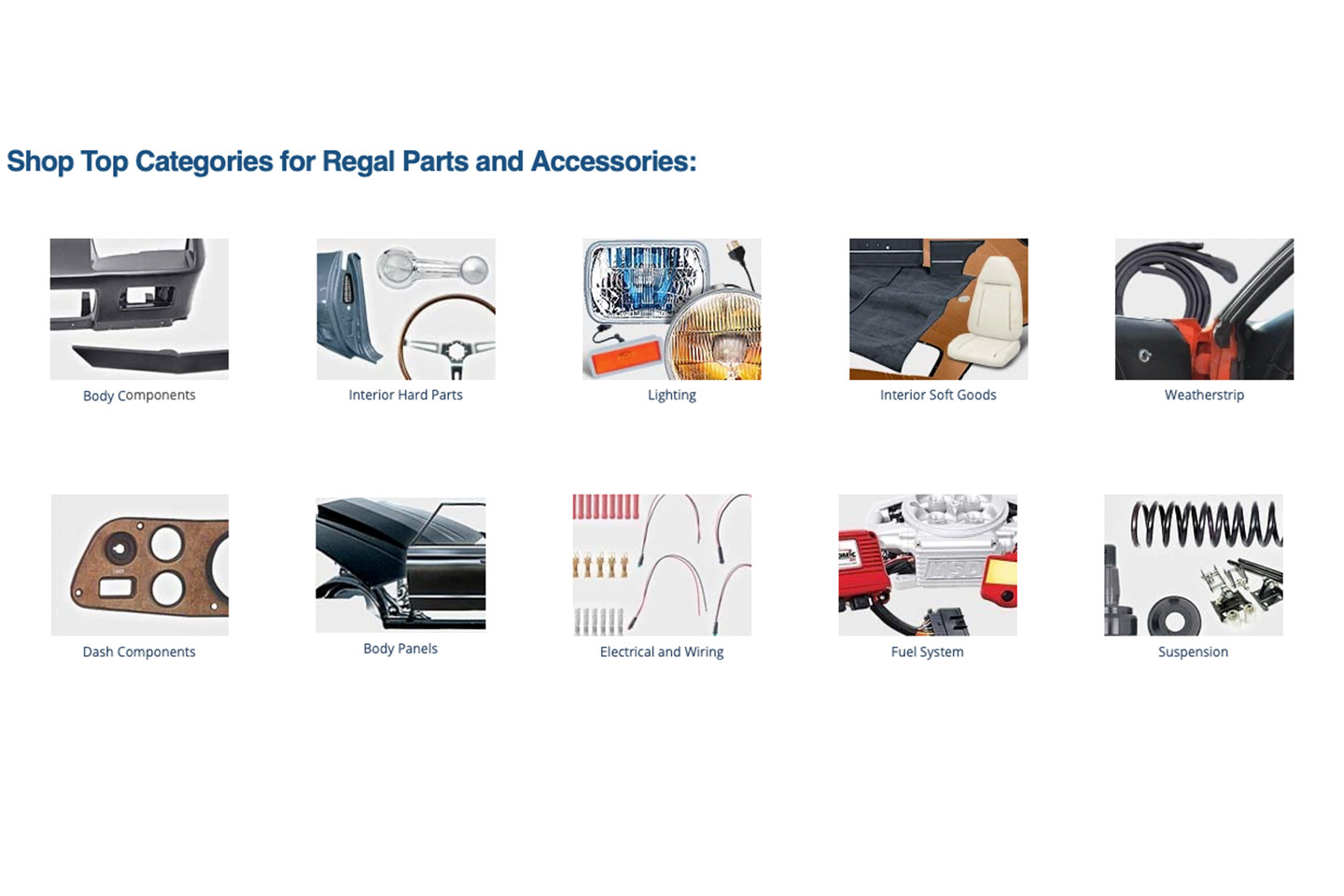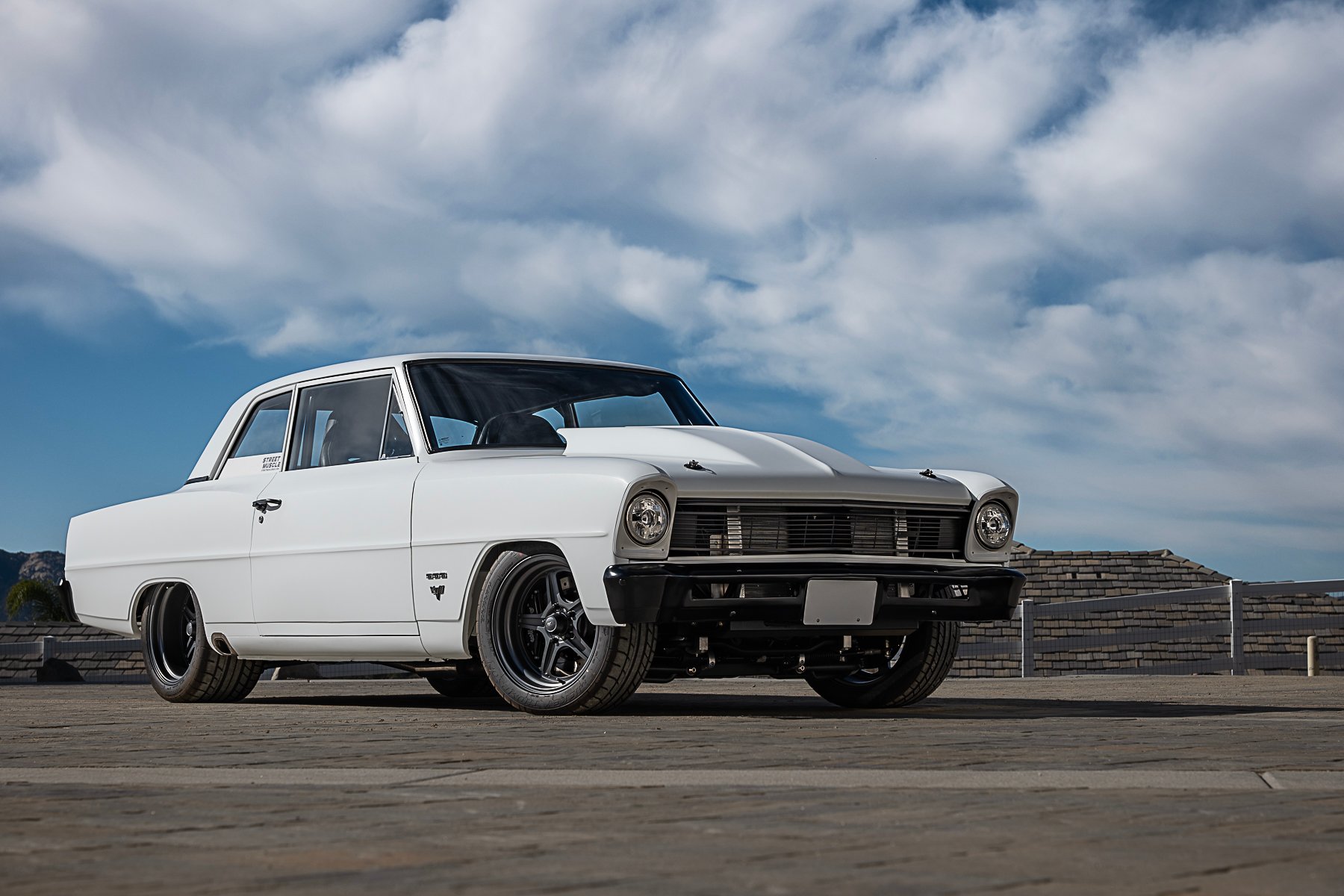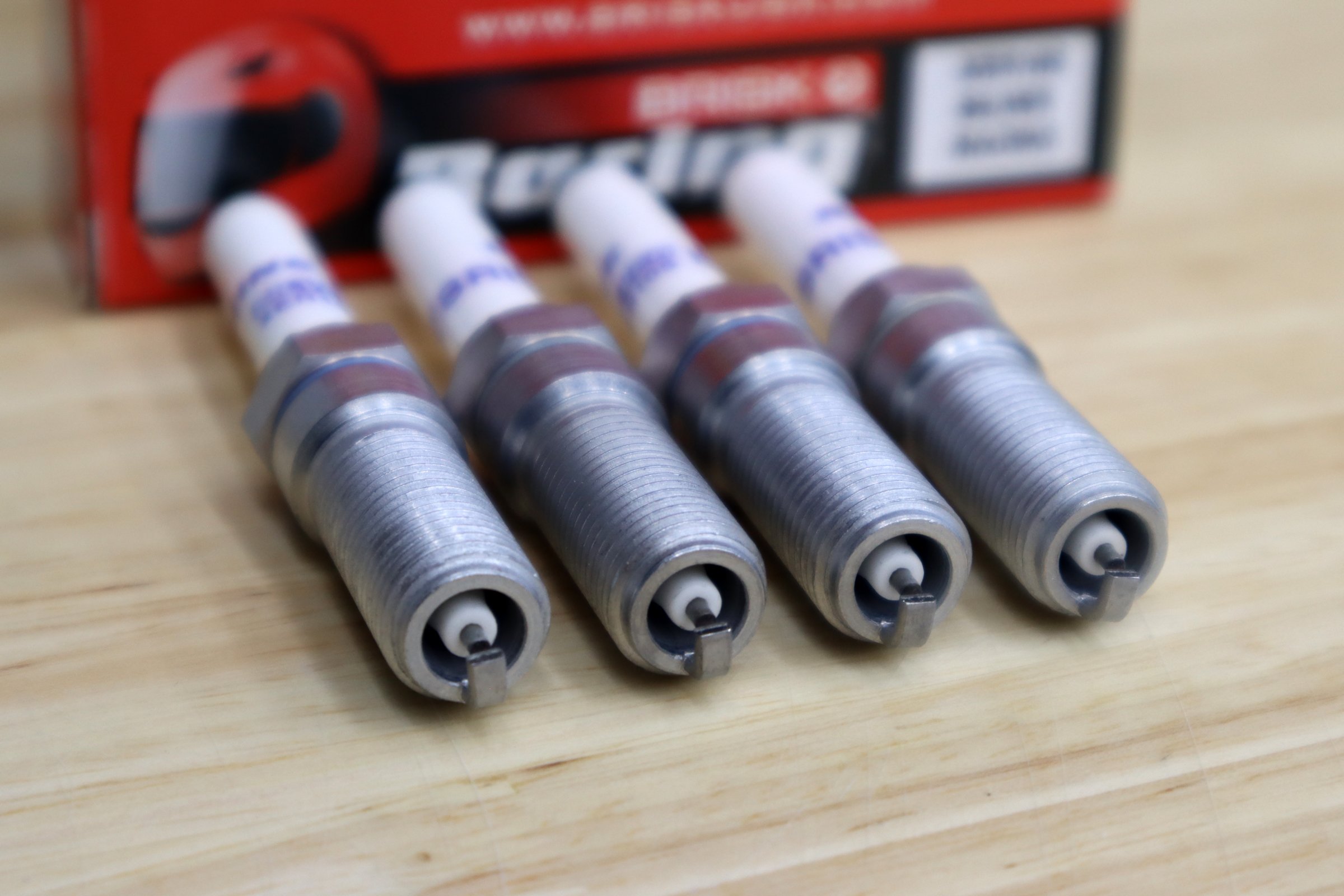Buick is the oldest automobile brand in the U.S. today and one of the oldest automakers in the world. Anything dealing with Buick is automatically associated with history. This is where Classic Industries enters the picture.
Buick has been marketed as a premium automobile brand, selling luxury and performance vehicles that have been positioned above GM’s mainstream brands. This is very similar to what Classic Industries does in the reproduction market.
In the paragraphs below, we are going to take an in-depth look at the history of the Buick Regal and all of its variations and do a deep dive into Classic Industries’ latest product line with their new Buick Regal Catalog.
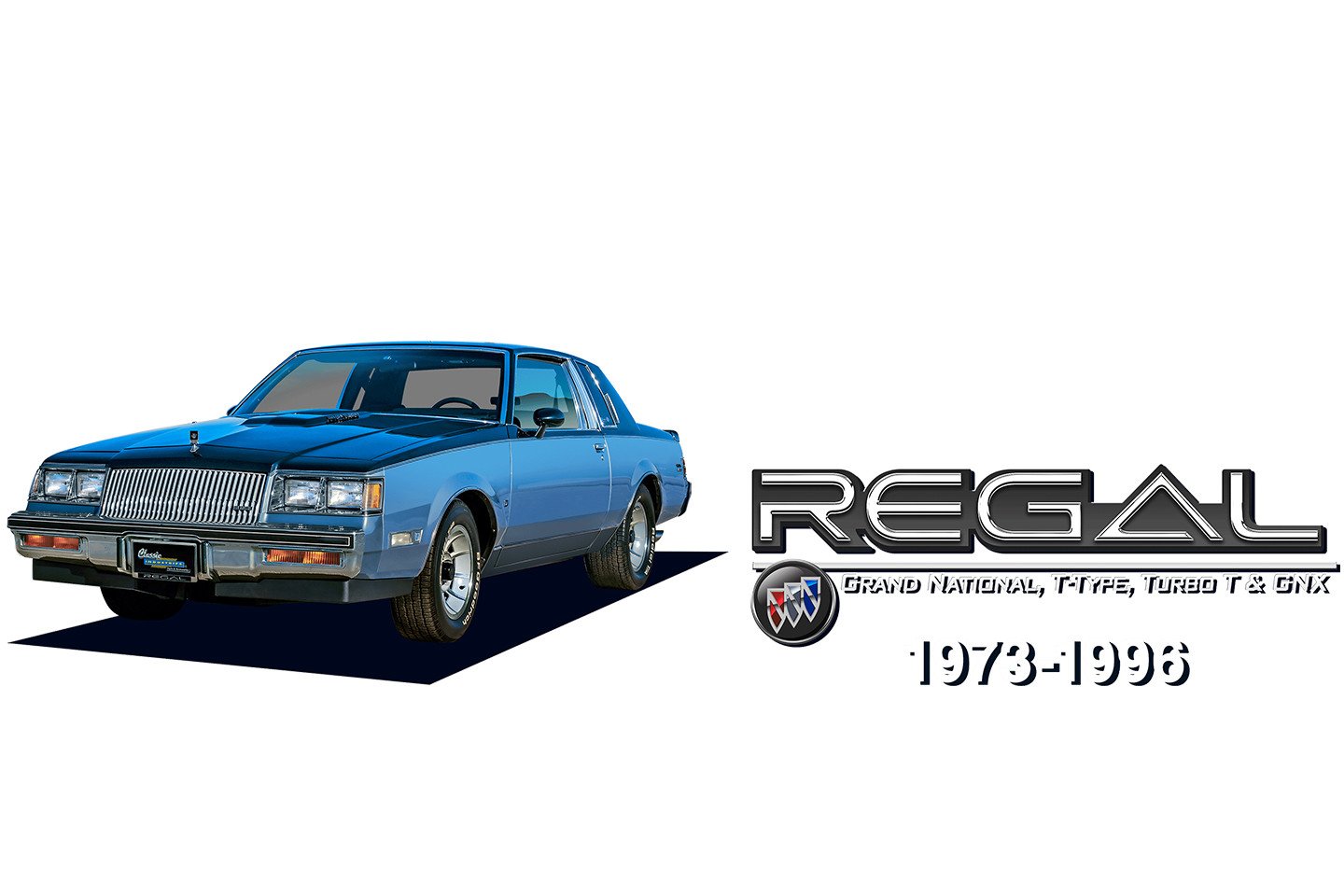
Photo from Classic Industries’ website.
Buick’s Racing Past
Long before the Regal nameplate, Buick had established itself as a performance vehicle. In fact, Louis Chevrolet worked for Buick and drove Buick racecars before founding Chevrolet Motor Car Company with his brother Gaston, and William Durant.
In fact, the first race held at the opening of the famed Indianapolis Motor Speedway on August 19 of 1909 was won by a Buick with Bob Burman at the wheel. There were three Buicks in the nine cars that started the Prest-O-Lite Trophy race. The race was a brutal affair with the track’s surface breaking up, causing the deaths of two drivers, two mechanics, and two spectators.
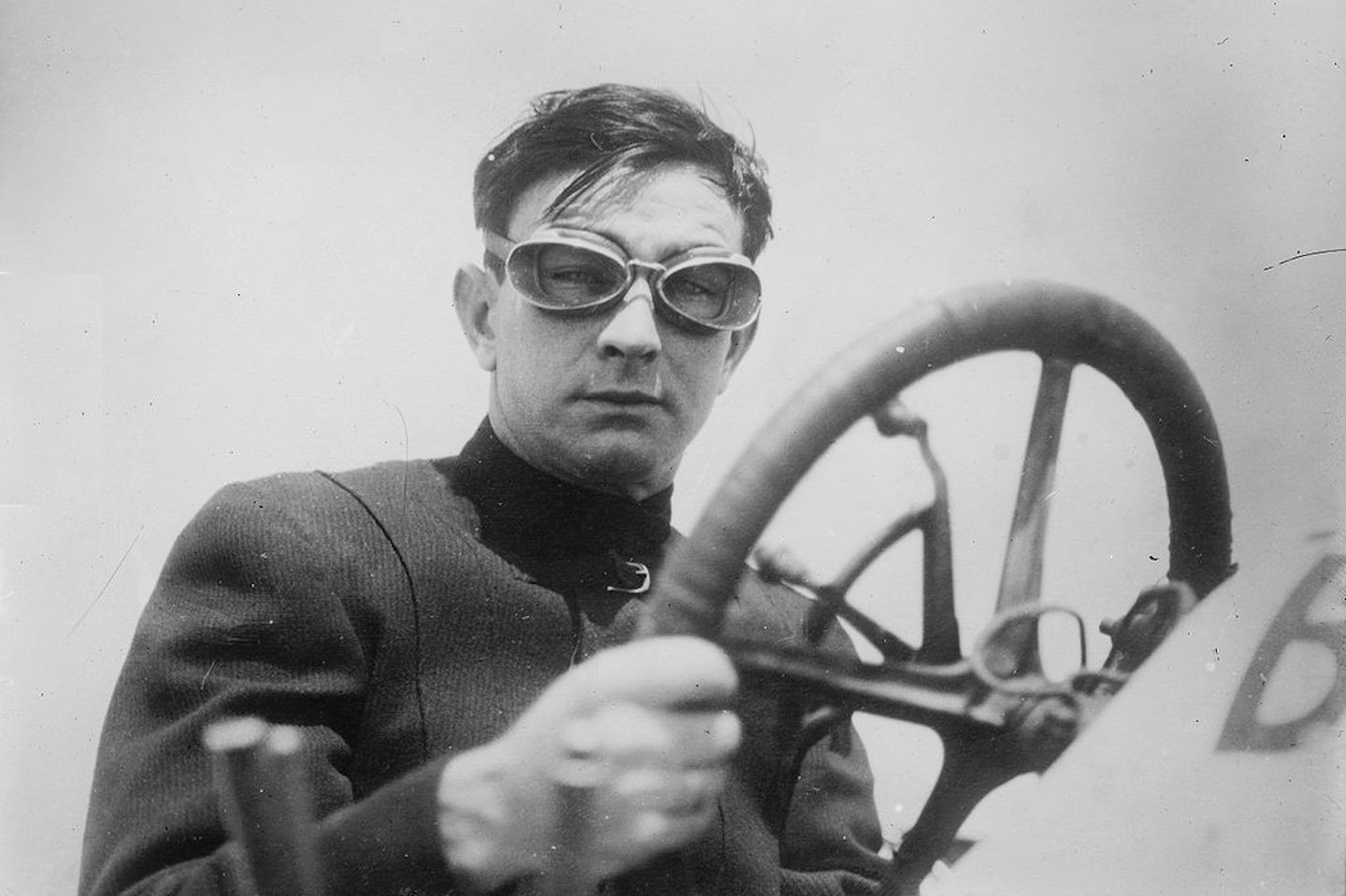
Bob Burman in 1911. Burman was the first driver to win a race at the Indianapolis Motor Speedway. He won racing a Buick-powered racer. Photo from wikipedia.org.
Buick was set to enter their cars in the inaugural Indianapolis 500 in 1911 but GM was in financial turmoil at entry time. Louis Chevrolet attempted to enter his Buick racer himself after the official close of entry. A vote was taken by AAA officials with all drivers and owners agreeing unanimously to allow the renowned racer Chevrolet to enter the race. At practice, Chevrolet’s Buick hit 110 mph which prompted the Marmon team owners to protest and veto Chevrolet’s entry into the race. Marmon driver Ray Harroun ended up winning the first Indy 500.
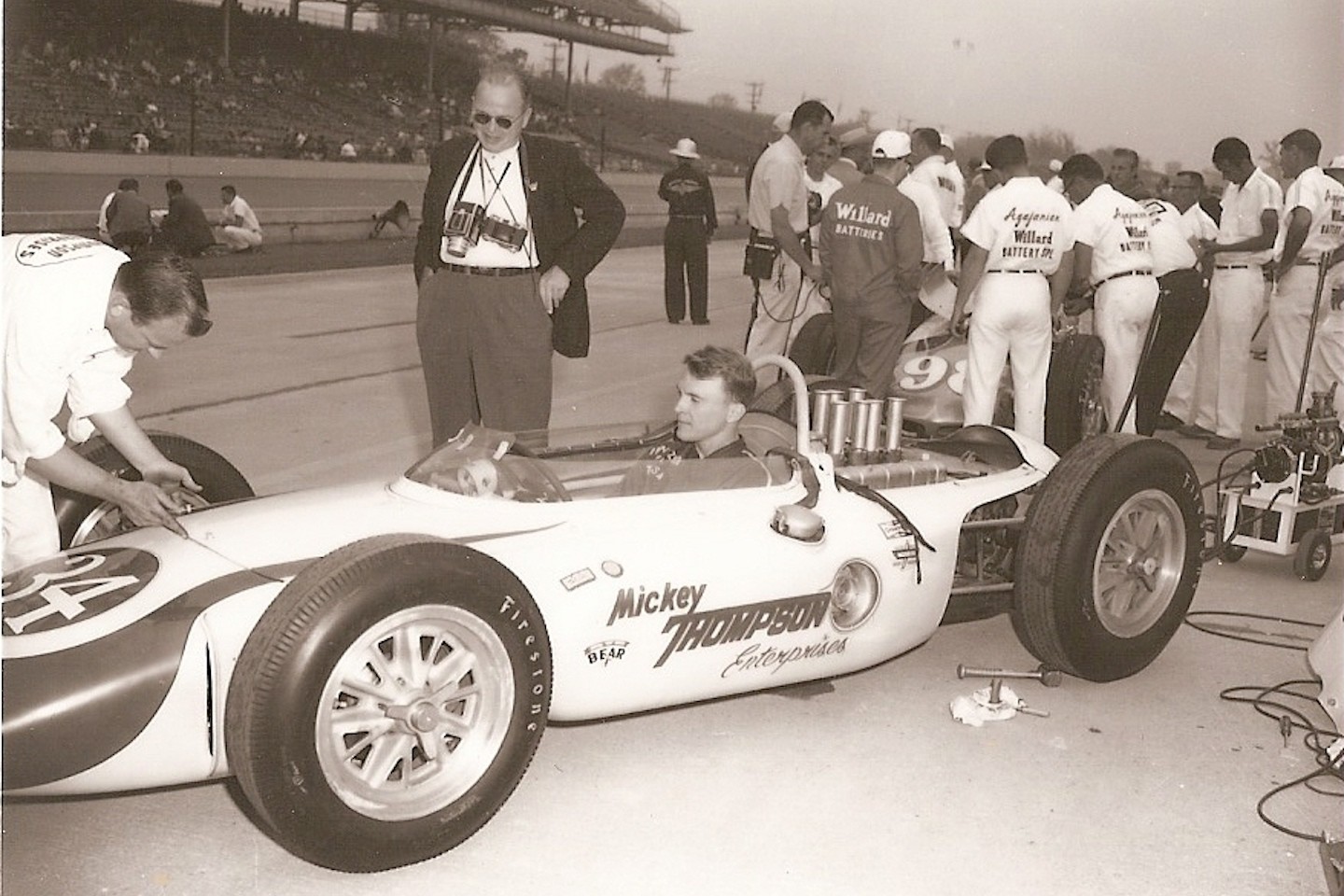
Mickey Thompson’s 1962 Indy Car driven by rookie driver Dan Gurney was powered by Buick’s stock block aluminum 215ci V8. From 1946-1962, there had not been a single stock-block car in this race. It was the only non-Offenhauser-powered entry in the field. Gurney qualified eighth in the car and did well for 92 laps before the car blew an improperly installed grease seal in the transaxle and the gears locked up. He finished in 20th place for the official record. Photo from wikipedia.org.
Buick saw other high-performance achievements over the years, like the Dynaflash 8, 320ci straight-eight engine in 1931, and the 215ci aluminum V8 that Micky Thompson entered in the 1962 Indy 500. A Buick Electra 225 paced the Daytona 500 race in both 1960 and 1963. But it was the Buick V6 that dominated racing in the ‘80s and ’90s. The era started with Darrell Waltrip and Bobby Allison winning the Winston Cup in 1981 and 1982 with their Buick Regals.
A Regal History
The Regal nameplate first appeared on Buick mid-sized passenger cars during the 1973 model year. This was Buick’s answer to Chevrolet’s Monte Carlo, and it did not take long for the Regal to find an audience with the mid-sized luxury car crowd.
The 1978 model year marked Buick’s 75th anniversary and welcomed a redesigned Regal coupe with a turbocharged V6 engine. The Buick model year sales broke another record with 795,316 vehicles sold.
Less than seven years after its introduction, racers discovered the Regal’s downsizing into a well-balanced package with a redefined powerplant. In the early ’80s, the Buick Grand National achieved better quarter-mile times than Chevrolet’s Camaro, had gained NASCAR’s attention with several wins, and still had an affordable price for the car-buying public.
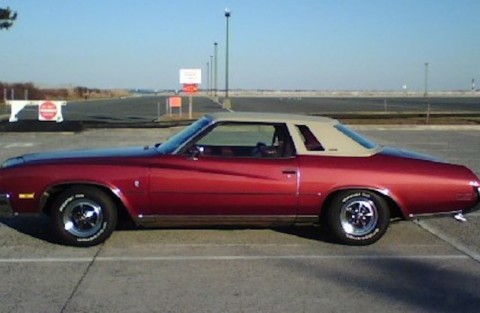
1973 Buick Regal. Photo from wikipedia.org.
The Push For Performance
Lloyd Reuss, the newly appointed Buick GM, began to move Buick into performance production cars and racing in 1980. The Regal was selected as the official pace car of the 1981 Indianapolis 500 as a result of his efforts. The following year, the Grand National high-performance package was offered on the Regal in an effort to capitalize on its NASCAR success. By 1984, Buick worldwide sales topped one million for the first time.
In 1987, the last of the turbo/intercooled Regal Grand Nationals, often referred to as the quickest American cars, hit the market. At the same time, 547 special-edition 1987 GNX models, that were even quicker, were produced. Sadly, it would also be the last year for the rear-wheel-drive Regal. In 1988 the Regal was downsized and converted to front-wheel drive. Bobby Allison won the Daytona 500 in a conventional front-engine/rear-wheel drive Regal that year.
The rare GNX (Grand National Experimental) models created a buzz as GM canceled the G-body platform. It was designed to be the Grand National to end all Grand Nationals and was made in partnership with McLaren Performance Technologies.
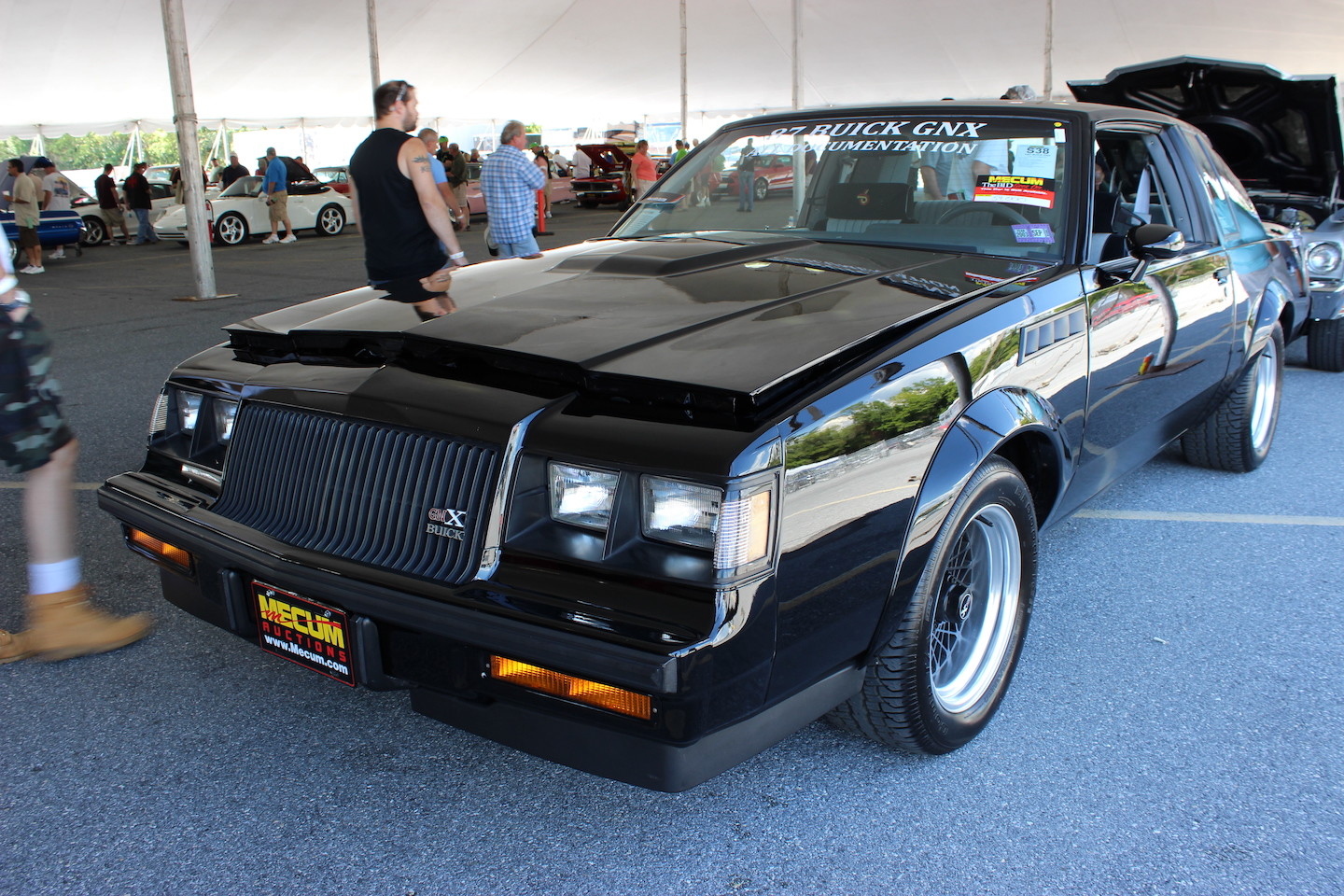
1987 Buick Regal GNX. Photo from wikipedia.org.
Even with the performance assistance from McLaren, the 1987 Regal Turbo-T was lighter and even faster than the GNX model. The Turbo-T could be had in 1987 by ordering the Regal with a T-package and the 3.8 liter V6 Turbo engine option. The non-turbo options received a 5.0-liter Oldsmobile-sourced V8 engine.
Regal Performance Variants:
- Buick Regal Sport Coupe (1982) 3.8 liter V6 Turbo
- Buick Regal T-Type (1983-1986) 3.8 liter V6 Turbo
- Buick Grand National (1982, 1984-1987) 3.8 liter V6 Turbo
- Buick Regal T Turbo (1987) 3.8 liter V6 Turbo
- Buick Regal T (1987) 307ci V8 option
- Buick Regal Limited models (1987) 3.8 liter V6 Turbo
- Buick GNX (1987) 3.8 liter V6 Turbo
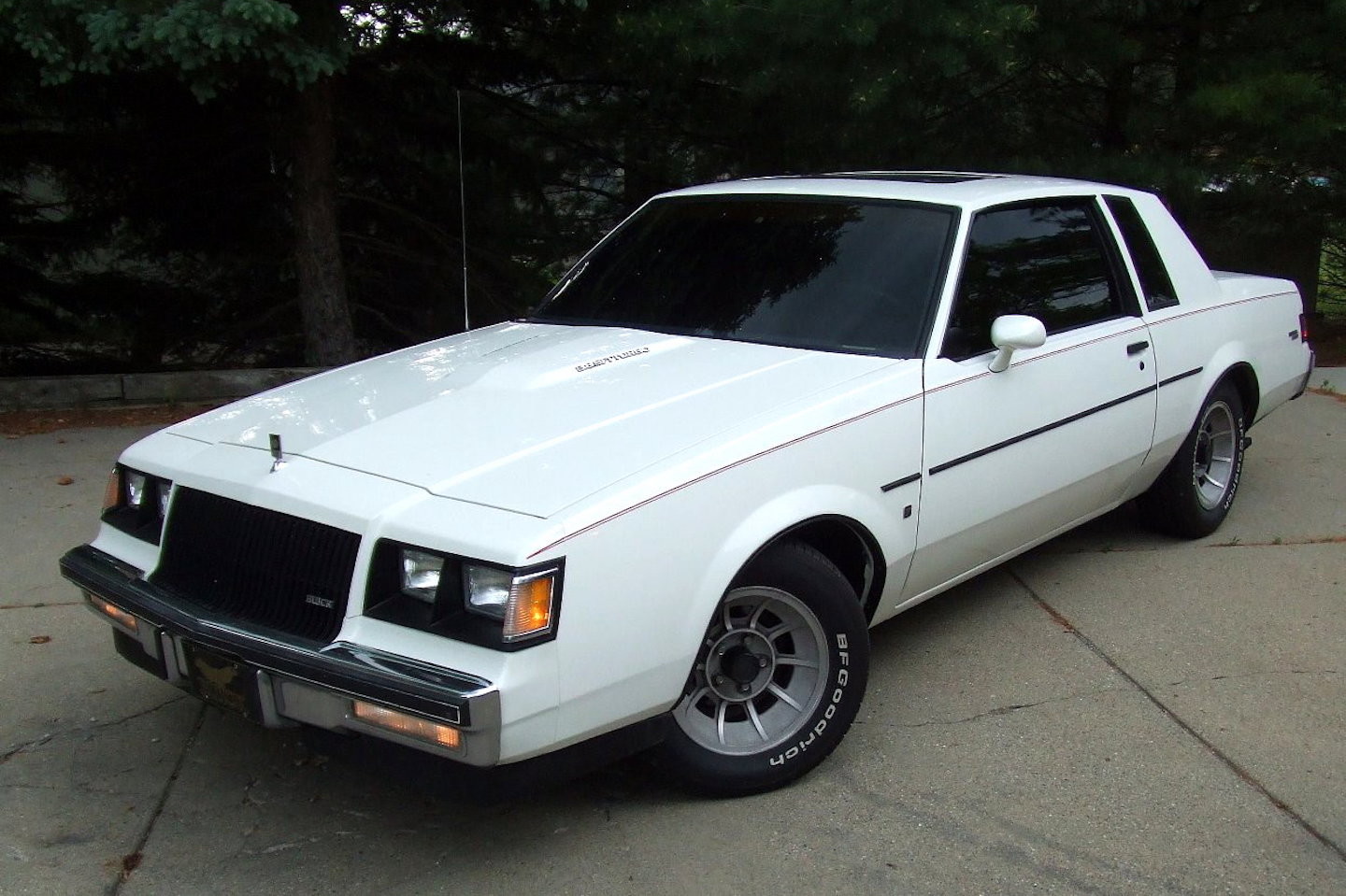
1987 Regal T Turbo with rare blackout WO2 trim package. Photo from wikipedia.org.
Classic Industries Support
Founded in 1976, Classic Industries earned its reputation as a “go-to” shop for enthusiasts seeking hard-to-find items for first and second-generation Camaros. Since then, Classic Industries has become a complete distributor and manufacturer of parts and accessories for muscle car owners of all brands. The company’s catalogs have become popular with enthusiasts for their illustrations and descriptions of systems and parts to help the home builders restore their project cars.
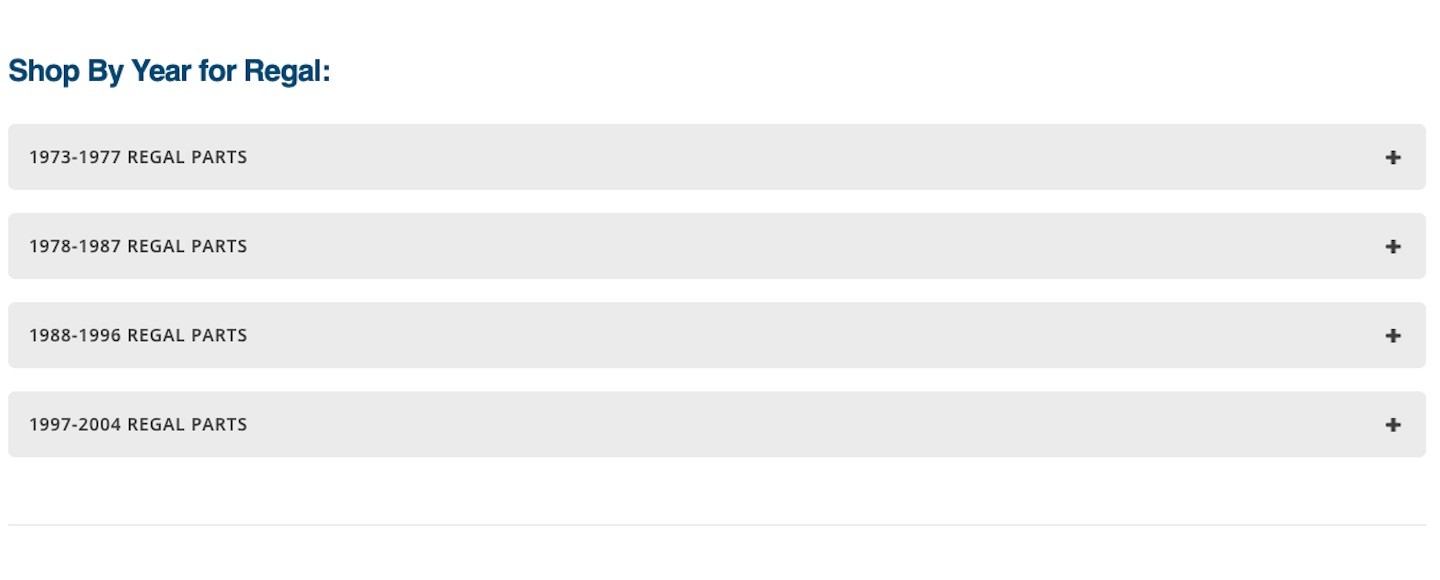
Classic Industries’ online catalog makes it easy to search for the Buick parts you want to find. You can search by part or narrow down your search by model year.
With a huge inventory of products, the staff at Classic Industries is always on standby to provide any technical support or assistance for car owners that are experiencing difficulty with their muscle car projects. The Buick Regal line is the latest addition to Classic’s massive inventory of GM authorized reproduction parts. Classic Industries’ Buick Regal catalog is available to download online by clicking here.
If you are a Buick fan but not looking for Regal parts, rest assured that Classic Industries will have you covered shortly. They already stock many parts for other Buick models and catalogs for popular Buick models are already being assembled. You can look forward to Buick catalogs for Electra (1959-1999), Wildcat (1959-1970), and LeSabre (1959-1990) from Classic Industries coming soon.
For more information on Classic Industries and the many different auto nameplates they support with replacement and reproduction parts, visit them online at www.classicindustries.com.

